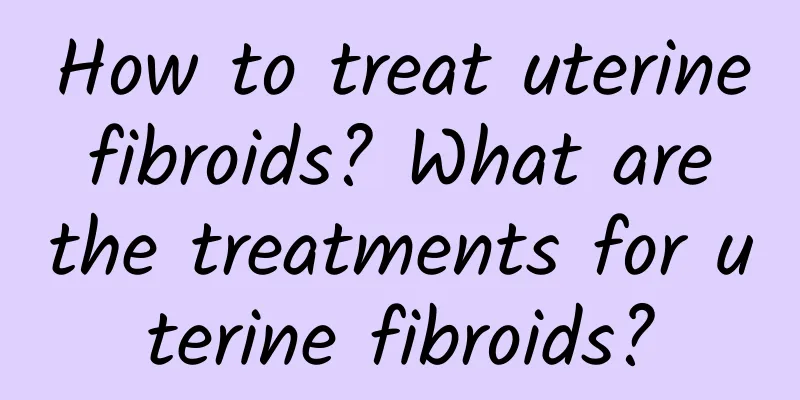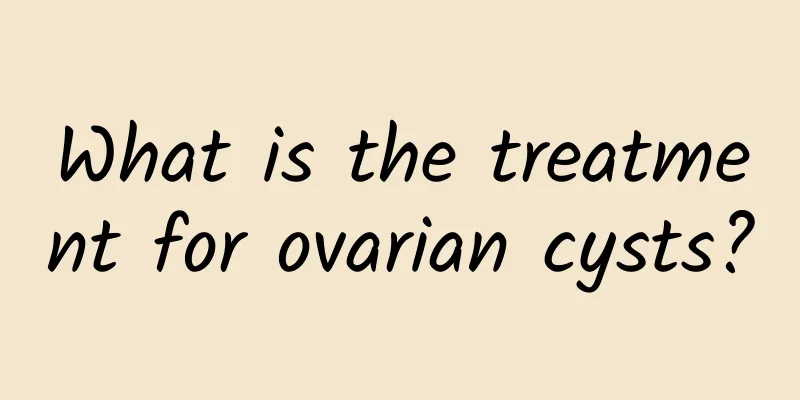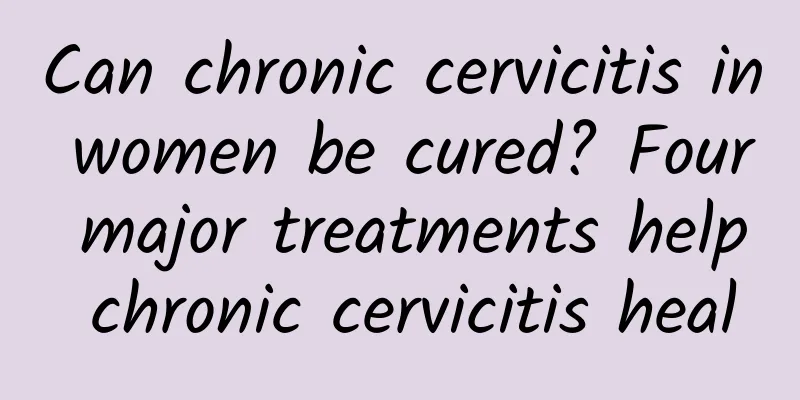How to treat uterine fibroids? What are the treatments for uterine fibroids?

|
Uterine fibroids are one of the most common benign tumors in the female reproductive organs and one of the most common tumors in the human body. They are also called fibroids and uterine fibroids. Because uterine fibroids are mainly composed of the proliferation of uterine smooth muscle cells and a small amount of fibrous connective tissue exists as supporting tissue, they are more accurately called uterine leiomyoma. Uterine fibroids. The main treatments for uterine fibroids are: 1. Drug treatment Gynecologists will recommend that if the fibroids begin to shrink, regular follow-up can assist in drug control. If the fibroids shrink and reduce, they can be controlled conservatively without surgical treatment. But if the fibroids grow, experts will recommend that patients have surgery to remove the fibroids to prevent malignant transformation. Experts warn that the practice of "all is done" for uterine fibroids is completely irresponsible to patients, especially for women approaching menopause. Some hospitals rush to perform hysterectomies, which will have a great adverse effect on patients. 2. Hysteroscopic surgery For some subserosal uterine fibroids, laparoscopic surgery is the most effective treatment method. Subserosal uterine fibroids are rarer than intramural uterine fibroids and submucosal uterine fibroids, and in many cases are not suitable for ultra-minimally invasive surgical indications. Laparoscopic surgery does not require surgery, has less damage, does not cause adhesions, does not leave ugly scars, has a fast recovery after surgery, and does not harm the uterus. 3. O'Rourke's minimally invasive surgery At present, minimally invasive technology has gradually matured in China. The Orlock superconducting multiple warhead system is a cutting-edge technology for professional minimally invasive treatment of uterine fibroids, and is a new medical method that truly meets international standards. The Orlock superconducting multiple warhead system minimally invasive treatment of uterine fibroids does not require surgery, hospitalization, fast recovery, no damage to the uterus, and no impact on fertility. The Orlock system has become the main brand technology for minimally invasive gynecology. Therefore, the treatment of uterine fibroids must be determined according to the specific situation and the patient's physical condition. Examination should be conducted in a regular hospital. Once the uterine fibroids become degenerative and infected, it will threaten the pelvic cavity and cause great harm. Treatment is required to ensure the health of women. The above is a brief introduction to the treatment of uterine fibroids. I believe that through the above introduction, we all understand the treatment of uterine fibroids and hope to help patients. |
<<: How to treat subserosal uterine fibroids?
Recommend
Prevention and treatment of chronic pelvic inflammatory disease
Chronic pelvic inflammatory disease is often caus...
Does left lateral adnexitis affect pregnancy?
Left-sided adnexitis may affect pregnancy and nee...
Treatment of comprehensive response to abortion
Some complications may occur during and after the...
Symptoms of early menopause
There are several manifestations in the early sta...
Symptoms of early vulvar leukoplakia in women: hyperkeratosis
Since the symptoms of vulvar leukoplakia can occu...
Does Bartholinitis cause constipation?
Bartholinitis is a very common disease in life. I...
What are the early symptoms of ectopic pregnancy?
What are the early symptoms of ectopic pregnancy?...
Estrogen for the treatment of functional uterine bleeding in adolescence
Dysfunctional uterine bleeding in adolescence is ...
Can severe cervicitis in women be cured? Patients with severe cervicitis must be treated in this way
Cervicitis is one of the common diseases nowadays...
What should be paid attention to for benign uterine fibroids? Do benign uterine fibroids need to be removed?
What should be paid attention to for benign uteri...
Can taking medicine cure menstrual disorders?
Taking medicine can treat menstrual disorders. Me...
How to distinguish between cervical precancerous lesions and cervical carcinoma in situ
The diagnosis method of cervical precancerous les...
How to prevent the recurrence of hyperprolactinemia
Hyperprolactinemia is a common disease in life. T...
What are the treatments for uterine fibroids? How to treat uterine fibroids with drugs
Uterine fibroids are common conscientious tumors ...
What medicine should I take to reduce menstrual blood clots?
What medicine should I take to reduce menstrual b...









